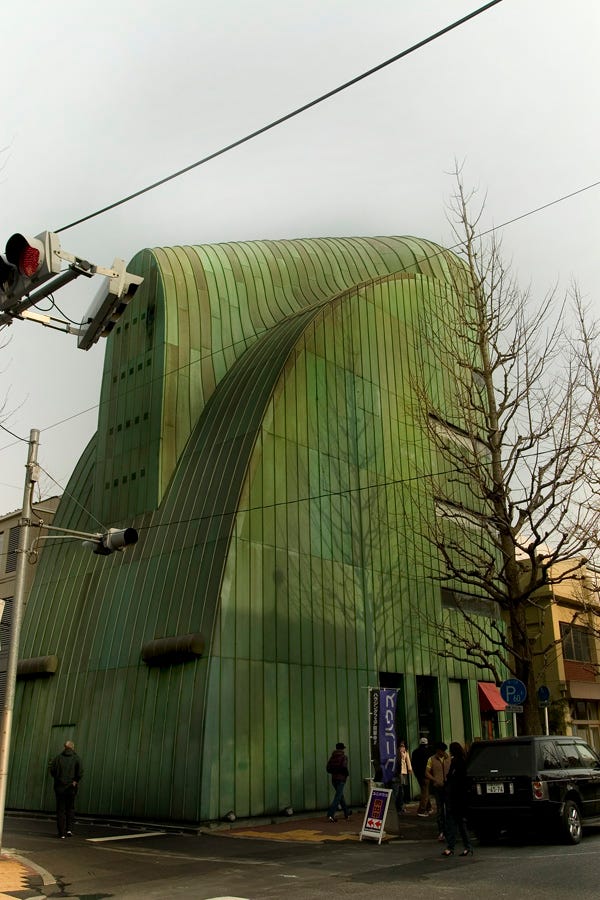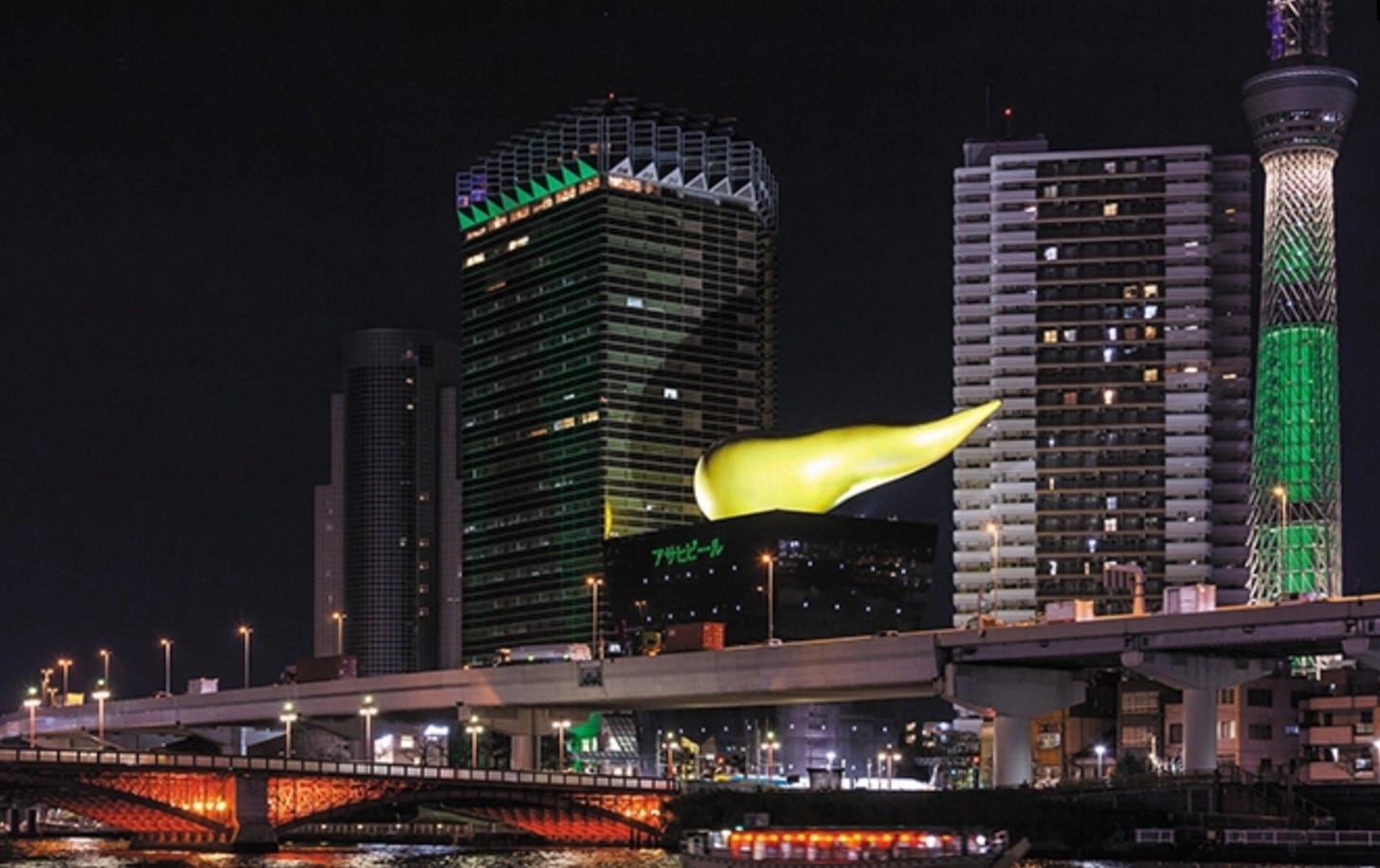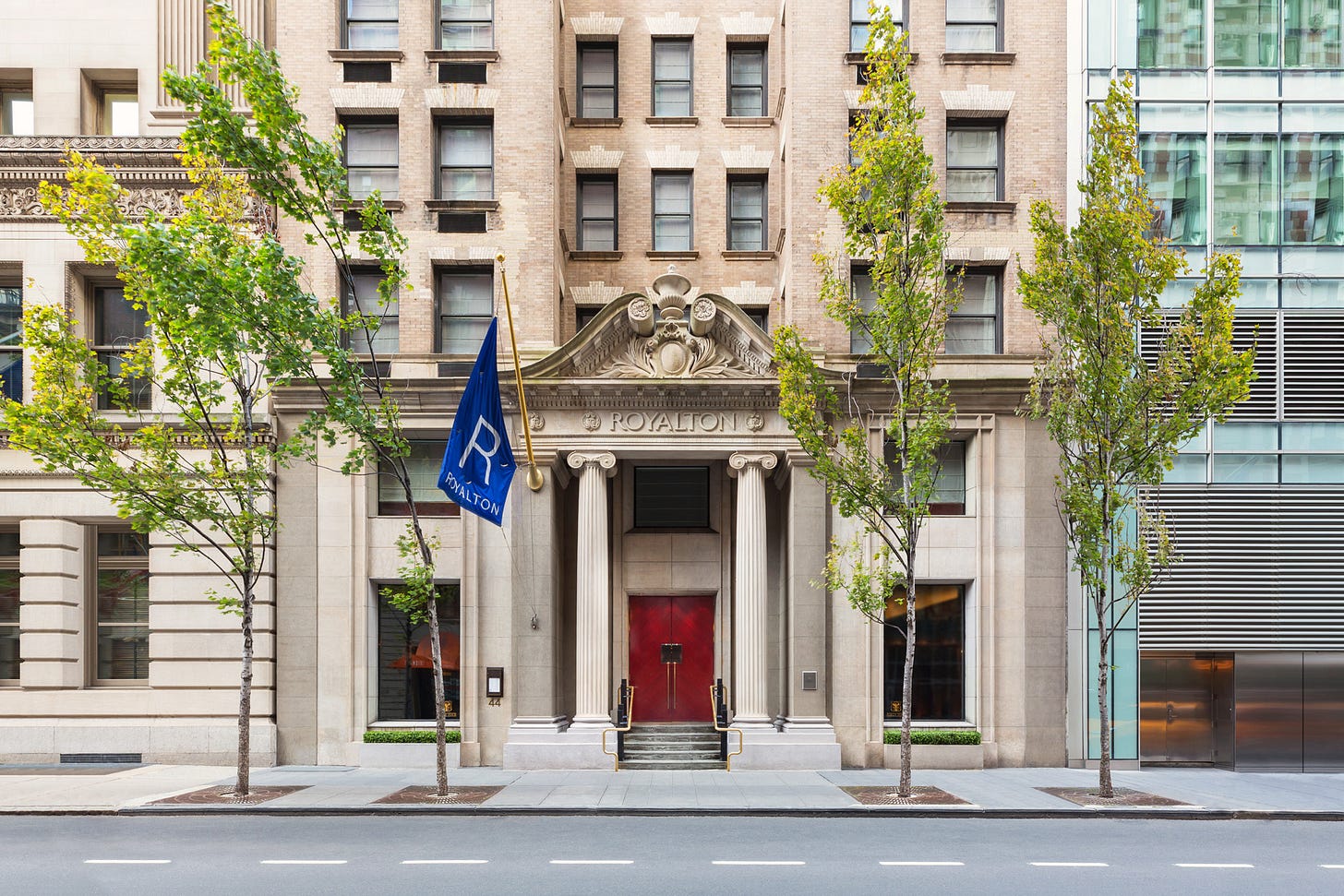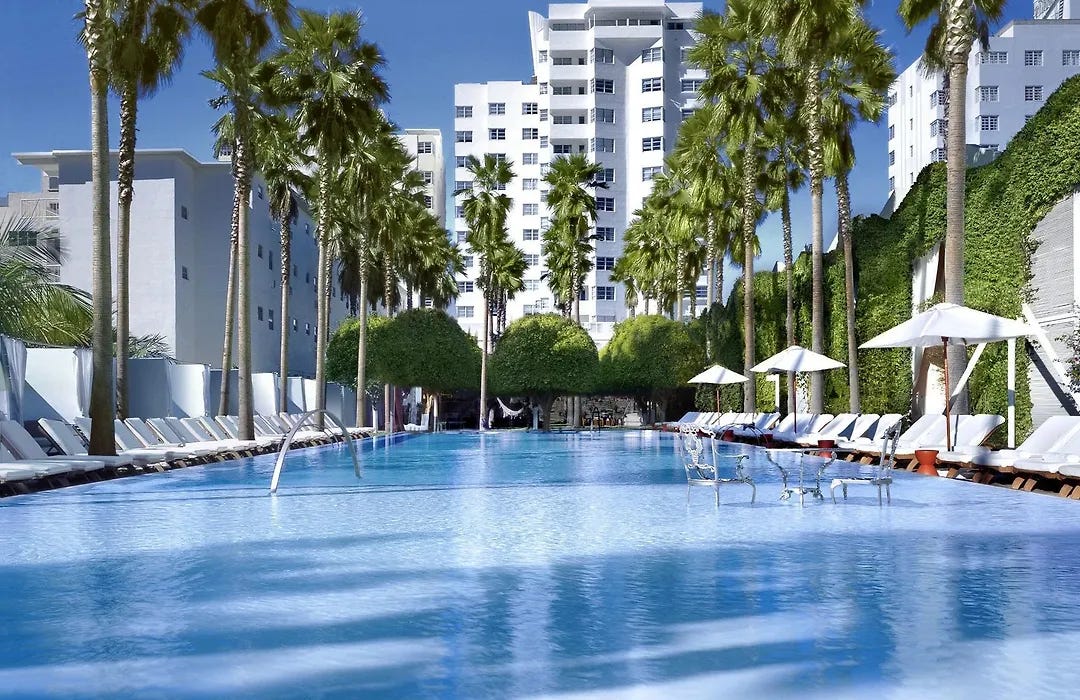Philippe Starck has never been shy about his ideas. Below is an interesting quote to that effect.
The future is dematerialisation. It is inevitable that architecture will become more and more dedicated to creating experiences.
Mr. Starck is also quoted on the very interesting website, rethinking the future, as saying:
Whether it’s a toothbrush, an airplane, or a chair, it’s always the same philosophy: to think about what the user will gain.
I recognize this newsletter is “Architecture for the Soul,” and that Philippe Starck is probably better known for works other than buildings and strictly defined architecture. But his work product remains infinitely interesting, so here we are.
It is increasingly annoying to hear Starck derided as a “pop designer.” In the end, don’t all architects and designers do the work they are given to do? If that is “hotels for hipsters.” Then fair enough.
UNhex Nani Nani
This five-story building in Tokyo is copper-clad (now having dramatically oxidized) and was designed by Starck for Unhex, a construction company, in 1989. Reportedly, the design intent is thought to be a green monster rising from a swamp……think “Creature from the Black Lagoon.”
A critical view of this building is that it resembles a giant suburban garden shed. Another view shows a star architect at work. I’ll let you decide.
Duravit design Center Duravit, Hornberg, Germany
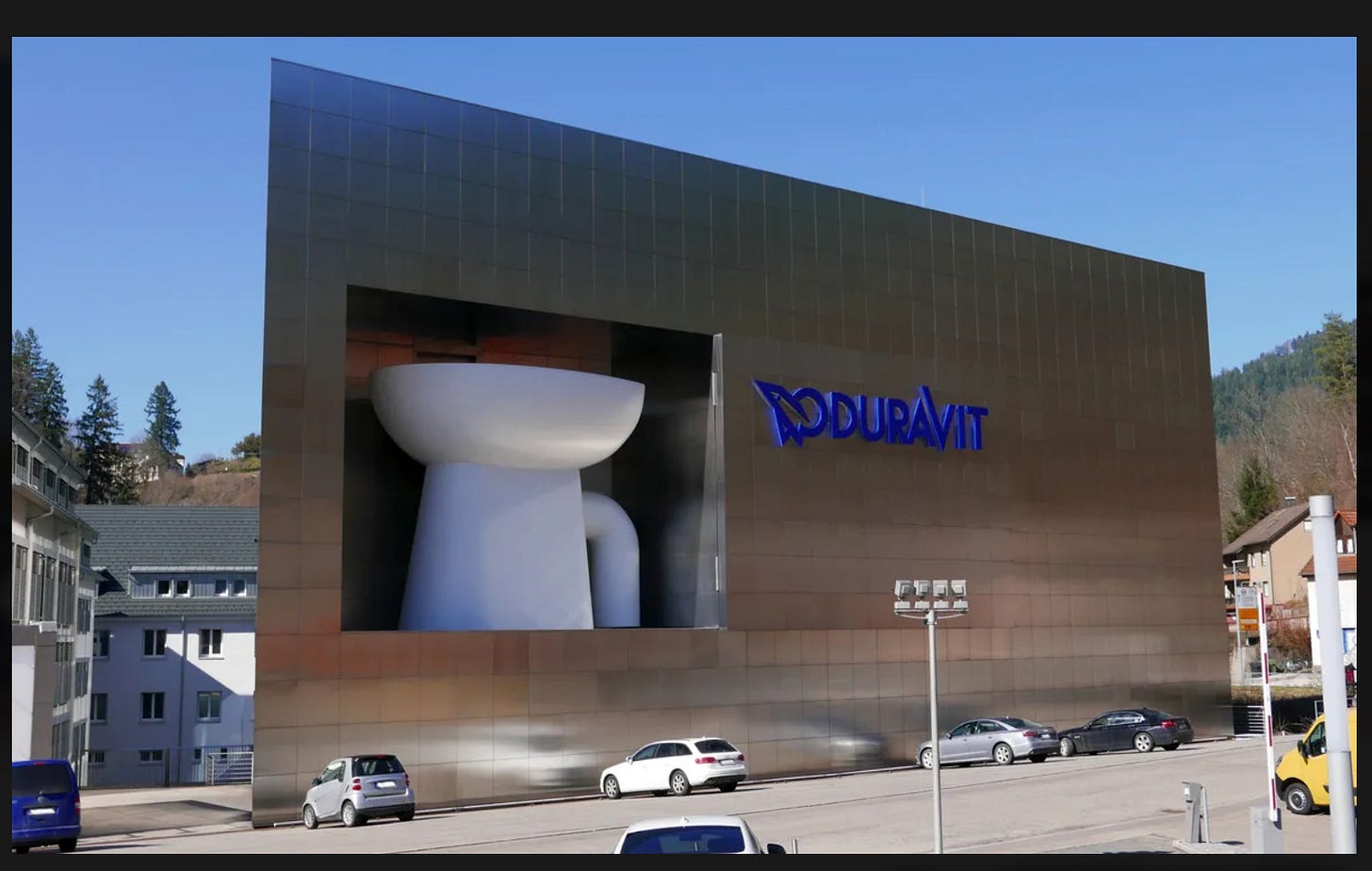
The Duravit website says:
The trapezoidal building, with its striking giant toilet as a viewing platform, designed by French design star Philippe Starck, takes the Duravit brand into a new dimension. Perfectly staged, completely differently designed exhibition spaces, including six in-house test bathrooms, delight visitors from all over the world: "Upgrade your everyday," as Duravit understands it. Visit our home and let us and our products convince you.
Asahi Breweries Headquarters, Tokyo
Finished in 1989, the Japan-focused website bento.com said this about the Asahi building:
This striking and unusual building is a must-see for anyone in the Asakusa area. Its flashy style is clearly in contrast with the anonymous gray buildings which are the norm in Tokyo, which only makes it more of a landmark. It is to the city's credit that such an unusual structure could have been built.
Where do we begin discussing a building that features a golden flame protruding from the top, intended to symbolize the brand's burning heart? Ok. It works for me, since the building is now considered a landmark of the new Tokyo architecture. But, then again, I tend to appreciate risk-taking design.
American Boutique Hotels
Hotel Royalton, New York
Mr. Starck describes the genesis of this project as getting a call in 1984 from Ian Schrager of New York’s Studio 54 fame. Schrager wanted a major revamp of a property that was to become the Royalton. Four years later, they finished what became the prototype for the Schrager “boutique hotel” concept.
I was in Manhattan soon after the Royalton opened and walked into the lobby wanting to check it out. I immediately retreated to the street, recognizing that I was not hip enough to be there and I was, in fact, desecrating their “set.” Oh well. A person must know their limitations.
Paramount Hotel, Manhattan
Continuing his cooperation with Schrager, Mr. Starck redesigned this 20s era Times Square area property for a 1990 opening. I was a frequent traveler in those days and the Schrager - Starck efforts were topics of discussion amongst frequent travelers everywhere I went.
The Delano, South Beach
If the Art Deco district on Miami Beach was saved from the wrecking ball in the late 70s and early 80s, places like The Delano solidified South Beach as an international destination in the 90s.
The Delanohotels.com site offered this about the history of the hotel:
More than a destination, Delano Miami was a dream world that traded traditional 5-star luxury for something far more modern and fresh, but equally grand. Introduced by Ian Schrager with design from Phillippe Starck, it sparked the imagination. A green hedge with a small door in the middle was placed at its entrance in a whimsical nod to Alice in Wonderland, billowing outdoor curtains swept guests inside, a crisp white aesthetic woke the senses and an apple a day, placed lovingly on a bracket for each room, charmed one and all.
I was living in SoFla during the heyday of the Delano. It was THE place. Well-heeled tourists, local architects and designers, developers, models and actors, you name it. The pool at the Delano was Nirvana for people watching. If the Philippe Starck mantra was to create experiences rather than just built environments, then the Delano succeeded.
Mondrian Hotel, Hollywood, CA
In 1959, an apartment complex occupied this site before it was transformed into a hotel that seemed to be a homage to Piet Mondrian. I was lucky to stay there in the late 80s, and it seemed like a Hollywood meets MOMA film set with the guests serving as the cast. The architecture critic of the LA Times, Nicolas Ouroussoff, opined:
In fact, only a hotel could achieve such a titillating mix of sensuality and escapism. What Starck and Schrager do so well is create a lure for the local scene that plays on the transient nature of its setting. In a city that thrives on fantasy, Starck’s creation is a supple mix of illusion and cold reality that will hold its own.
His American boutique hotel period firmly established Philippe Starck in the design icon category. This was an era when the star architect concept was on the rise globally.
Mr. Starck moved on to other types of high profile work, such as prominent high rise work in Uber hip South Florida.
Icon Brickell, Miami
The building’s website summarized:
Icon’s architecture, by the world renowned firm Arquitectonica, is unique and ultra-contemporary, perfectly paired with the interior design by Philipe Starck. Its Olympic-length pool overlooking Biscayne Bay, its outdoor fireplace, its exceptional spa, and its lushly landscaped outdoor living room, are some of the distinct amenities that make this building a true icon.
I was living in Miami at this time and I was intrigued by the pairing of local legend Arquitectonica with Mr. Starck, Today, the results seem self evident.
The Arquitectonica website describes the complex very well:
Icon Brickell features three soaring towers with 1,794 residential condominium units, a W Hotel and a destination restaurant. The W Hotel tower houses a boutique hotel in conjunction with residences, offering hotel services for both guests and owners. Amenities available for residents and hotel guests include a 28,000 SF (2,600 SM) spa and luxury swimming pools.
Having briefly touched on Philippe Starck as an architect and interior designer, it’s time to look at one of his amazing product designs.
Alessi Salif Citrus Juicer
The website 2modern.com offers a comprehensive description of this legendary piece:
An icon of modern design, residing in the permanent collection of the Museum of Modern Art, the Alessi Juicy Salif Juicer is a Philippe Starck design that famously originated in a sketch made on a napkin during a holiday on Italy's Amalfi coast. Introduced in 1990 as Juicy Salif, this modern citrus juicer is constructed from cast aluminum and features a distinctive silhouette that recalls the leggy form of a squid's tentacles—rumored to be what Starck was eating when inspiration struck him. The subject of heated discussions and academic dissertations, the Alessi Juicer is unquestionably one of the most famous of all Alessi designs.
Conclusion
Philippe Starck, for all his renown, still remains active across an amazingly broad spectrum of projects, including product design, architecture, and even a bit of engineering for space station design with Axiom Space. What a talent. Thanks for reading.





